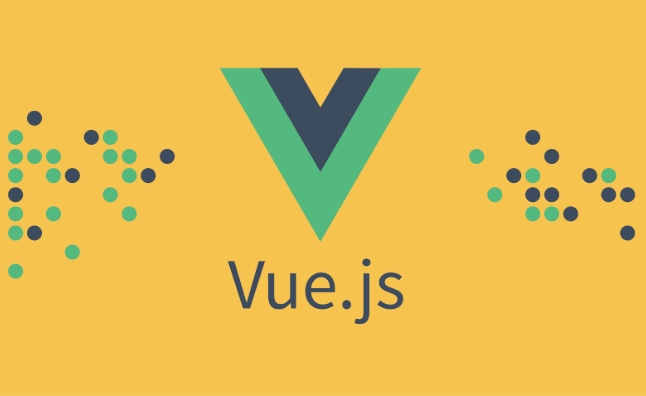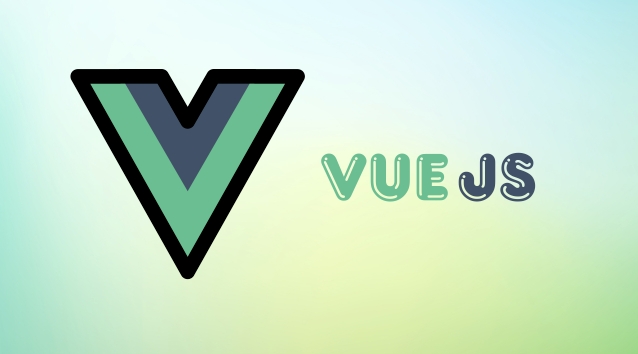How to create a reusable dropdown menu component in Vue?
Jul 18, 2025 am 02:30 AMCreate a reusable drop-down menu component in Vue, which requires the control of content and triggering methods through props and the use of slots to achieve customization. 1. The component structure includes trigger buttons and pull-down panels, using label prop to set button text, isOpen to control the display status; 2. The interactive logic adopts v-model bidirectional binding to control the display, combined with disabled props to support the disabled state, and click outside closing is achieved through clickoutside command; 3. The style is controlled by class, the slot allows custom menu content, and supports trigger and default slot expansion; 4. The command encapsulation of v-click-outside is used to optimize the closing logic and improve the interactive experience. The solution is clear in structure and highly extensible, and is suitable for a variety of scenarios.

Create a reusable drop-down menu component in Vue, the core is that the components are structured clearly, logically decoupled, and flexible in style. The key point is to control menu content and trigger mode through props, and to use slots to achieve flexible content customization.

Basic structure and component division
First, you need a basic component structure, usually a Dropdown.vue file. The component should contain a trigger element (such as a button) and a pull-down panel. The basic structure is as follows:
<template>
<div class="dropdown">
<button @click="toggle">{{ label }}</button>
<div v-show="isOpen" class="dropdown-menu">
<slot></slot>
</div>
</div>
</template> In this structure, label is a prop, used to set button text; isOpen is an internal state variable, controlling whether to display drop-down content; slot is used to insert menu items.

Control display and interaction logic
In order to make the components more flexible, it can support functions such as clicking externally close, disable status, and automatic menu hiding. This part of the logic can be handled like this:
- Use
v-modelto control the display status of the menu - Use
refto get the component DOM, and use theclickoutsidecommand to achieve click external close - Supports disabled status (prop
disabled)
Sample code:

props: {
label: String,
modelValue: Boolean,
disabled: Boolean
},
setup(props, { emit }) {
const isOpen = computed({
get: () => props.modelValue,
set: (val) => emit('update:modelValue', val)
});
const toggle = () => {
if (props.disabled) return;
isOpen.value = !isOpen.value;
};
// Add clickoutside logic or use third-party instructions}Style and slot expansion
In order to make components more general, styles should be controlled using class, rather than writing them to death. At the same time, using the slot mechanism allows users to customize menu content. for example:
<template>
<dropdown v-model="showMenu">
<template #default>
<div class="menu-item" @click="handleClick">Option 1</div>
<div class="menu-item" @click="handleClick">Option 2</div>
</template>
</dropdown>
</template> You can also support multiple slots, such as trigger slots for custom trigger buttons, and default slots for menu content.
Optimize interactive experience with instructions
To improve the interactive experience, a v-click-outside instruction can be encapsulated to detect whether a click occurs outside the component, thereby automatically closing the menu. This directive can be encapsulated separately as a plug-in or registered locally within the component.
Sample instructions:
const clickOutside = {
mounted(el, binding) {
el.clickOutsideEvent = (event) => {
if (!(el === event.target || el.contains(event.target))) {
binding.value();
}
};
document.addEventListener('click', el.clickOutsideEvent);
},
unmounted(el) {
document.removeEventListener('click', el.clickOutsideEvent);
}
};Then use in the component:
<div v-click-outside="close" class="dropdown-menu">...</div>
Basically that's it. This component can meet the needs of most scenarios, with clear structure, controllable logic, and convenient for subsequent expansion.
The above is the detailed content of How to create a reusable dropdown menu component in Vue?. For more information, please follow other related articles on the PHP Chinese website!

Hot AI Tools

Undress AI Tool
Undress images for free

Undresser.AI Undress
AI-powered app for creating realistic nude photos

AI Clothes Remover
Online AI tool for removing clothes from photos.

Clothoff.io
AI clothes remover

Video Face Swap
Swap faces in any video effortlessly with our completely free AI face swap tool!

Hot Article

Hot Tools

Notepad++7.3.1
Easy-to-use and free code editor

SublimeText3 Chinese version
Chinese version, very easy to use

Zend Studio 13.0.1
Powerful PHP integrated development environment

Dreamweaver CS6
Visual web development tools

SublimeText3 Mac version
God-level code editing software (SublimeText3)
 What is headless UI in Vue?
Jul 08, 2025 am 01:38 AM
What is headless UI in Vue?
Jul 08, 2025 am 01:38 AM
HeadlessUIinVue refers to a library of UI components that provide no preset styles and only contains core logic and behavior. Its features include: 1. No style restrictions, developers can customize the design; 2. Focus on barrier-free and interactive logic, such as keyboard navigation, state management, etc.; 3. Support Vue framework integration, exposing the control interface through combinable functions or components. Reasons for use include: maintaining design consistency, built-in accessibility, strong component reusability, and lightweight library size. In practical applications, developers need to write HTML and CSS themselves. For example, when building a drop-down menu, the library handles state and interaction, while developers decide on visual presentation. Mainstream libraries include HeadlessUI and RadixVue for TailwindLabs, suitable for
 How to watch nested properties in Vue 3?
Jul 07, 2025 am 12:51 AM
How to watch nested properties in Vue 3?
Jul 07, 2025 am 12:51 AM
In Vue3, there are three ways to monitor nested properties using the watch function: 1. Use the getter function to accurately monitor specific nested paths, such as watch(()=>someObject.nested.property,callback); 2. Add the {deep:true} option to deeply monitor changes within the entire object, which is suitable for situations where the structure is complex and does not care about which property changes; 3. Return an array in the getter to listen to multiple nested values ??at the same time, which can be used in combination with deep:true; in addition, if ref is used, the nested properties in its .value need to be tracked through getter.
 How to build a component library with Vue?
Jul 10, 2025 pm 12:14 PM
How to build a component library with Vue?
Jul 10, 2025 pm 12:14 PM
Building a Vue component library requires designing the structure around the business scenario and following the complete process of development, testing and release. 1. The structural design should be classified according to functional modules, including basic components, layout components and business components; 2. Use SCSS or CSS variables to unify the theme and style; 3. Unify the naming specifications and introduce ESLint and Prettier to ensure the consistent code style; 4. Display the usage of components on the supporting document site; 5. Use Vite and other tools to package as NPM packages and configure rollupOptions; 6. Follow the semver specification to manage versions and changelogs when publishing.
 Key differences between Vue 2 and Vue 3?
Jul 09, 2025 am 01:29 AM
Key differences between Vue 2 and Vue 3?
Jul 09, 2025 am 01:29 AM
Vue3 has improved in many key aspects compared to Vue2. 1.Composition API provides a more flexible logical organization method, allowing centralized management of related logic, while still supporting Vue2's Options API; 2. Better performance and smaller package size, the core library is reduced by about 30%, the rendering speed is faster and supports better tree shake optimization; 3. The responsive system uses ES6Proxy to solve the problem of unable to automatically track attribute addition and deletion in Vue2, making the responsive mechanism more natural and consistent; 4. Built-in better support for TypeScript, support multiple node fragments and custom renderer API, improving flexibility and future adaptability. Overall, Vue3 is a smooth upgrade to Vue2,
 How to create a Vue 3 project with Vite?
Jul 05, 2025 am 01:39 AM
How to create a Vue 3 project with Vite?
Jul 05, 2025 am 01:39 AM
It is recommended to use Vite to create Vue3 projects because it uses the browser's native ES module support and has a fast startup speed in development mode. 1. Make sure to install Node.js (16.x or higher) and npm/yarn/pnpm; 2. Run npmcreatevite@latestmy-vue-app--templatevue initialization project; 3. Follow the prompts to select TypeScript, VueRouter and other configurations; 4. Execute cdmy-vue-app and npminstall installation dependencies; 5. Use npmrundev to start the development server. Optional configurations include automatic browser opening, proxy settings, alias paths, and packaging optimizations. Recommended insurance
 How to define routes in vue router?
Jul 05, 2025 am 12:58 AM
How to define routes in vue router?
Jul 05, 2025 am 12:58 AM
Defining routes in Vue projects requires understanding the structure and configuration. The steps are as follows: 1. Install and introduce vue-router, create a routing instance, and pass in a routes array containing path and component; 2. Use dynamic routing matching such as /user/:id to obtain parameters; 3. Use children attribute to implement nested routes; 4. Name the routes with the name attribute for jumping; 5. Use redirect for path redirect. After mastering these core points, you can configure routing efficiently.
 Benefits of using ?
Jul 08, 2025 am 12:20 AM
Benefits of using ?
Jul 08, 2025 am 12:20 AM
? in regular expressions are used to convert greedy matches to non-greedy, achieving more accurate matches. 1. It makes the content as little as possible to match as little as possible to avoid mismatch across tags or fields; 2. It is often used in scenarios such as HTML parsing, log analysis, URL extraction, etc. that require precise control of the scope; 3. When using it, it is necessary to note that not all quantifiers are applicable. Some tools need to manually enable non-greedy mode, and complex structures need to be combined with grouping and assertions to ensure accuracy. Mastering this technique can significantly improve text processing efficiency.
 What is CORS and how does it affect Vue development?
Jul 07, 2025 am 12:11 AM
What is CORS and how does it affect Vue development?
Jul 07, 2025 am 12:11 AM
CORSissuesinVueoccurduetothebrowser'ssame-originpolicywhenthefrontendandbackenddomainsdiffer.Duringdevelopment,configureaproxyinvue.config.jstoredirectAPIrequeststhroughthedevserver.Inproduction,ensurethebackendsetsproperCORSheaders,allowingspecifico






